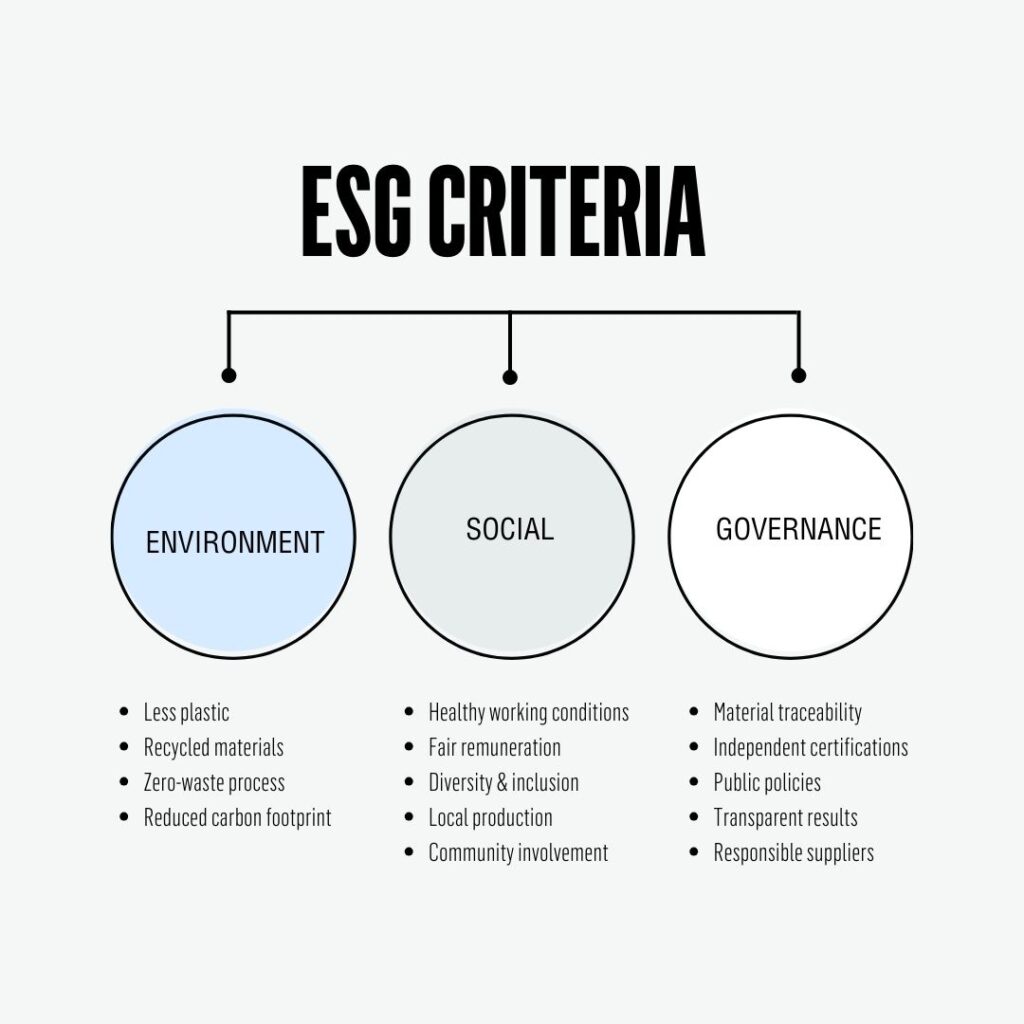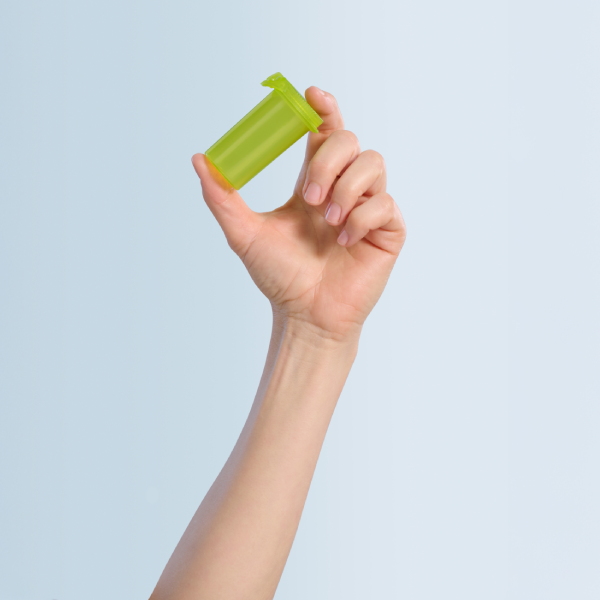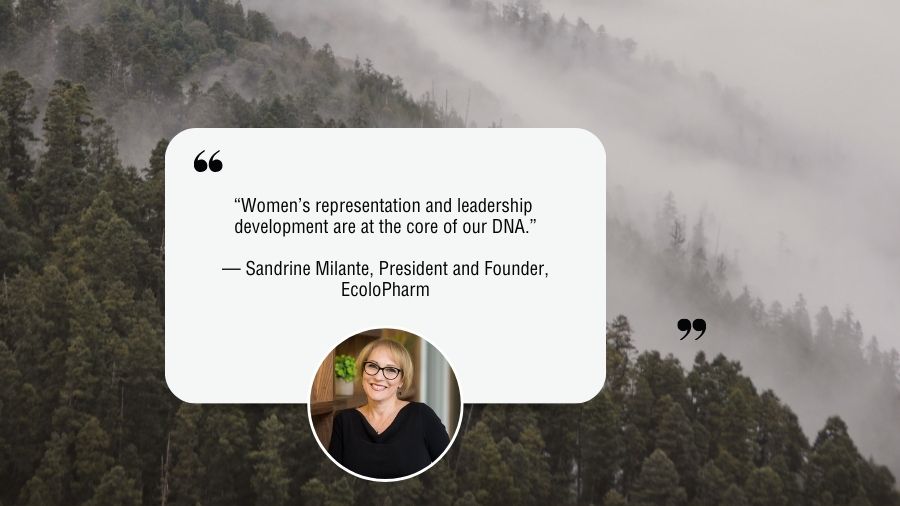Practical Guide: Is your medication packaging ethical?
You already know whether your packaging is recyclable.
But is it ethical?
Does it embody your professional values of rigor, fairness, and compassion?
Discover the concept of ethics in medication packaging, and how to know if yours are… or not.
The link between ethics and packaging
When talking about sustainable development, environment usually comes to mind first.
But sustainability relies on three inseparable pillars, known as ESG:
1. Environment (environmental impact, materials, end of life)
2. Social (working conditions, human rights, inclusion, diversity)
3. Governance (transparency, certifications, responsible supply chain)
These pillars are central to the concept of ethics.
What is ethical packaging?
Ethical packaging is designed, manufactured, used, and disposed of responsibly, in line with ESG principles.

ENVIRONMENT
- Use of recycled or renewable materials
- Measuring and reducing carbon footprint
- Minimizing waste
- Proper end-of-life (e.g., designed for easy / effective recycling)
- No toxic substances (PVC, BPA, etc.)
EXAMPLE
The EcoPill compliance packaging is made in Canada (local production = fewer GHG emissions) and contains 30% recycled plastic.
It is produced through a zero-waste process, with a non-toxic material (PVC-free). Its design facilitates recyclability (single material, optimized size, clear identification, and lightweight blisters).
SOCIAL
Ethical packaging considers people at every stage of its lifecycle. It is designed and manufactured under conditions that support respect, dignity, and well-being:
- Safe and healthy working conditions
- Fair, decent wages
- Implemented DEI policies (diversity, representation, parity, advancement of women in leadership)
- Local production that strengthens the economy and reduces dependency on long supply chains
- Corporate and employee social engagement in the community
- Certifications that support work-life balance
EXAMPLE
EcoloPharm is women-owned and led. In its plant, 35% of employees are women, compared with 29.6% on average in Québec.
The company holds the Concilivi certification, which demonstrates its ability to promote work-life balance, even in a manufacturing environment, where schedules are often rigid.
GOVERNANCE
Healthcare professionals have a high standard of excellence.
Ethical packaging must meet the same standards of rigor and transparency.
Any company that claims to be responsible should apply the following criteria:
- Material traceability
- Transparent communication (impact, results)
- Business practices backed by strict, applied, and published policies (DEI, ethics, local purchasing, etc.)
- Collaboration with engaged suppliers
- Certifications audited by independent third parties
EXAMPLE
Globally, EcoloPharm was the first pharmaceutical packaging company to achieve B Corp certification, which guarantees the highest social and ethical standards.
In addition, EcoloPharm:
- Requires suppliers to sign a Code of Ethics to ensure full supply chain responsibility
- Transparently discloses its environmental impact
- Has a public local purchasing policy
- Encourages employee community involvement through a structured social engagement program
Is “ethical packaging” a recognized term?
No. Unlike terms such as “sustainable” or “eco-friendly,” ethical packaging does not yet have an official standard.
However, its lack of formal definition does not make it any less relevant.
Defining what we mean by ethical packaging is not only legitimate but necessary.
It helps promote strong corporate values, fosters collective reflection on packaging choices, and raises industry standards.
All for the benefit of professionals, patients, communities, and the environment.
Quickly assess the ethics of your packaging in 5 questions
1. Where does it come from, and how was it made?
Is it locally produced?
Were resources, energy, and waste minimized at the design stage?
2. Who made it, and under what conditions?
Do the manufacturer and partners respect human rights?
Do they promote equity, diversity, and healthy working conditions?
3. Are its impacts owned and transparent?
Does the company communicate both successes and challenges?
Does it share learnings and improvements?
4. Are commitments consistent with reality?
Does the marketing reflect actual practices?
Is there independent certification to back them up?
5. Is the packaging useful and minimal?
Was it designed to fulfill its purpose with the least material possible?
Does its design improve ergonomics, accessibility, or waste reduction?
What’s next?
Ethical packaging is not a utopia.
It is a pragmatic, measurable vision that combines human well-being, operational performance, and environmental impact.
At EcoloPharm, we believe it’s time to do more, with less.
Ready to take action?
Would you like to explore a range of ethical packaging solutions, or dive deeper into this concept? We can help you see clearly.
To go further, contact us or order your free product trial kit.
FAQ
1. What is ethical packaging?
Ethical packaging is designed, manufactured, used, and disposed of responsibly across all levels:
• Environment (carbon reduction, industrial byproduct reuse, zero waste production, circular economy)
• Social (fair working conditions, inclusion, local production)
• Governance (transparency, certifications, responsible partners)
2. Is it a standardized term?
No. The term is not officially defined. But like “sustainable” or “responsible,” it is legitimate and relevant, provided it is backed by concrete practices.
3. What’s the benefit for a pharmacy in choosing ethical packaging?
- Reinforces the consistency of social responsibility commitments
- Meets the growing expectations of stakeholders (patients, staff, community)
- Can simplify procurement processes
4. Are there concrete examples?
Yes. All EcoloPharm products are eco-designed, locally manufactured with less plastic, combining high performance with socially audited practices (B Corp certification).
5. How to know if my packaging is ethical?
Start with asking 3 simple questions:
• Does the packaging minimize its impact from the design stage?
• Is it manufactured under responsible conditions?
• Does the supplier act with transparency?
Less plastic. More time.
Our eco-designed packaging reduces your environmental impact while improving efficiency in the lab.
✓ Free ✓ No commitment

Other articles that might interest you

Pharmacy Lab: 13 Ways to Boost Operational Efficiency in 2026
Boost your pharmacy lab’s efficiency with 13 smart strategies and tools to streamline workflow, reduce waste, and improve care.

Ecodesigned packaging in pharmacies: 4 myths to debunk
EcoloPharm reveals 4 common myths about ecodesign, and the truth behind them.

Prescription Drug Packaging: 5 Unexpected Levers of Profitability for Pharmacies
What if your packaging became a performance lever? With EcoloPharm, discover unexpected ways to secure, simplify, and enhance your pharmacy operations.

What Prescription Drug Packaging Isn’t Telling You
Discover 5 (sometimes hidden) truths about medication packaging.
WE ARE PASSIONATE ABOUT SUSTAINABLE DEVELOPMENT.
We’re eager to meet new change agents who share our values with regard to sustainable development.
Do you have an inspiring idea you would like to share?


